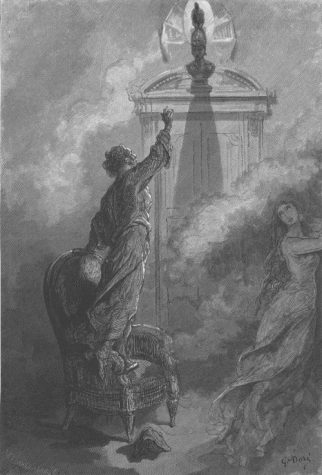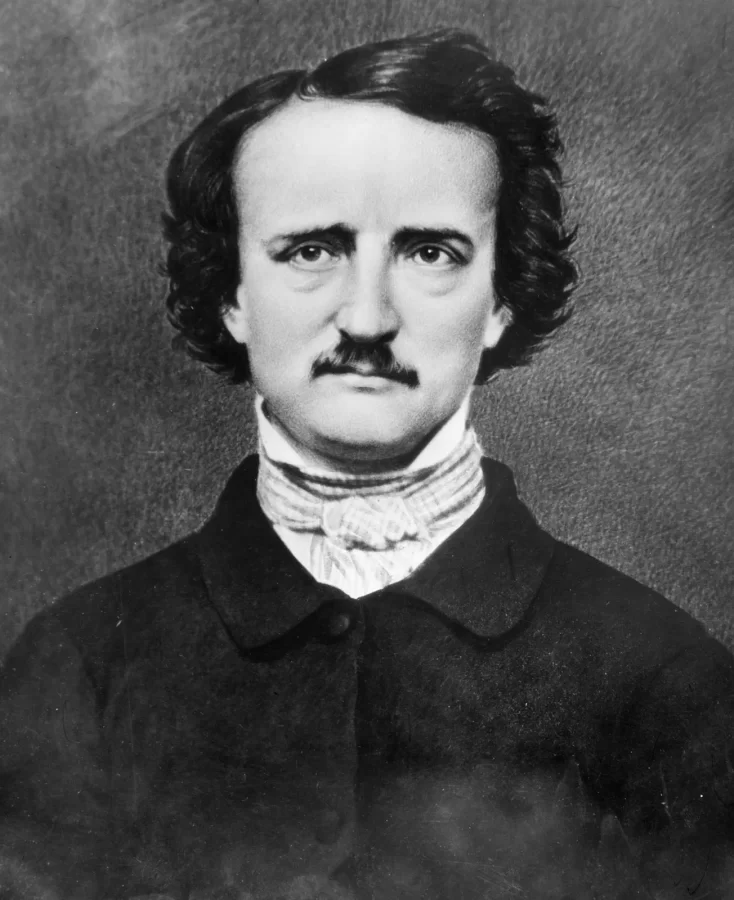The Dream within a Dream
April 20, 2023
One of the most popular, and influential writers in the 19th century, lived a life perhaps darker than any of his works. Born January 19th, 1809, Edgar Allan Poe was born to actors Elizabeth and David Poe who both died before he reached the age of 4, separating him from his siblings before leaving for Virginia under the guardianship of John Allan. Throughout his life, Poe suffered from his gambling addiction while facing his never-ending grief over the loss of his mother and his wife, Virginia, who both died from tuberculosis at the age of 24.
To this day, Poe is best recognized for his short stories and poems, most of which revolve around feelings of grief. An emotion that he described as “mournful and Never-ending remembrance”, would be a main component in what he would describe as the Unity of Effect. This effect went far beyond basic horror, using murder and songs of grief Poe would explore the human mind and its propensity for self-destruction.
In his most famous work ‘The Raven’, the narrator of the poem grieves over the loss of his wife. Opening his tale by saying “From my books surcease of sorrow- Sorrow for the Lost Lenore, For the rare and radiant maiden Whom the angels named Lenore, Nameless here Nevermore.” At the tapping at his window, the narrator accidentally allows a raven to enter his chamber as it does nothing more than stand at the head of his chamber door. Throughout the story, the narrator continues to question the Raven of his wife Lenore, to which the bird responds with only the word ‘Nevermore’. The word acts as a response to the narrator’s pleas for mercy which are self-fulfilling prophecies of despair. Having lost to his grief and madness, the narrator declares “And my soul from out that shadow That lies floating on the floor Shall be lifted – Nevermore!”
In some of his most famous short stories, violence is also used as a means of characters coping or suffrage from their madness. In “The Tell-Tale Heart”, the narrator is deeply unhinged by the big blue eye of an old man. The old man himself is loved by the narrator, but as long as the man’s eye is visible the narrator is led to madness. After committing a horrid murder, the narrator then chop’s up the old man and hides him under the floorboard of his home. As officers arrive to investigate, the narrator, at first normal and calm, is driven to madness. Due to his empathy towards the old man, the narrator is disturbed by an imaginary beating heart under the floorboards that only he hears. As the heart beats louder, the narrator is horrified, believing the officers do hear the heartbeat but are simply ignoring it to torment him. Believing they are making a mockery of his horror, the narrator is led to madness before admitting to the horrible murder. “Villians!” I Shrieked, disassembled no more! I admit the deed!- tear up the planks!-here, here!-it is the beating of his hideous heart!”
What makes this short story so popular is not only because of the use of murder and psychological horror, nor its reference in The Simpsons but because of the narrator himself. This narrator is unreliable as he fails, or refuses, to give readers relevant information in an attempt to confuse them. This method is used by writers as a way of making a puzzle for readers, unreliable narrators tend to misinterpret or lie about the events they describe, making characters more complex and layered. So in The Tell-Tale Heart, the narrator might be trying to justify his actions as throughout the story he keeps trying to explain how he is not crazy.

While Edgar Allan Poe was best known for his horror, most people likely didn’t know that he invented the detective genre as we know it. In three stories, Poe introduced the first ever detective in fiction, C. Auguste Dupin, who used his intelligence and unusual observation skills to solve crimes. The Mystery of Marie Rogêt is based on a real murder case which Poe likely tried solving himself in this story, but since the case was never solved the story wasn’t exactly finished.
While not a huge theme, Poe did write short stories which used science fiction. Such as a short story about a supposed balloon voyage to the moon, and an incident where doctors put a dying man under hypnotism to get him to speak from the other side. I suppose fantasy is also on the list with the Masque of the Red Death being the closest to the genre.
Edgar Allan Poe, although one of the most influential writers, never found financial success as a result of his alcoholism and gambling addiction. Like his work, Poe’s death is mysterious as he was discovered dead outside a tavern. While alcohol poisoning would seem like a reasonable cause, that would not be the case. There are few genuine images of the author, all of which portray the man’s brooding expression. It’s as if Poe never knew how to smile.





